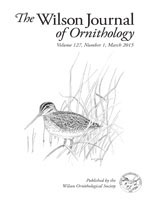Turkey Vultures are one of the most widely distributed carrion feeders throughout the Americas. We analyzed their regurgitated pellets from two localities in the Atacama Desert of Chile. Natural foods included dogs, sea lions, and feathers present in 17% of the pellets. We also found that 78% of pellets from coastal sites and 83% of pellets from inland sites contained plastic material. Plastic was likely ingested because vultures scavenge in plastic bags disposed as garbage along roads and beaches. Plastic ingestion has been documented in marine birds but only occasionally in raptors. Seabirds are vulnerable to the effects of ingested plastics because of their inability to regurgitate this material. Although vultures can regurgitate plastic, we do not know the physiological effects related to ingestion of the material. The availability of food from garbage bags could partly explain the widespread distribution of these vultures in the desert, but the inclusion of these items in their diet likely provides little to no energy. Turkey Vultures patrol roads in search of animals hit by vehicles, which facilitates finding carrion and garbage. Garbage in plastic bags has increased as more roads have been built in these areas; in the future, it will be important to study the effects of ingested plastics on these birds.
How to translate text using browser tools
1 March 2015
Plastic Material in the Diet of the Turkey Vulture (Cathartes aura) in the Atacama Desert, Chile
Juan C. Torres-Mura,
Marina L. Lemus,
Fritz Hertel
ACCESS THE FULL ARTICLE
Atacama Desert
carrion
Cathartes aura
diet
plastic ingestion
Turkey Vulture





